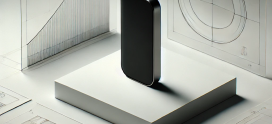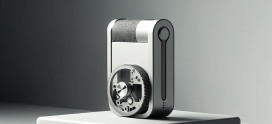
Embracing Generative Design in Medical Device Development: Explore How Generative Design Is Revolutionizing Medical Device Manufacturing by Optimizing Product Design for Functionality, Manufacturability, and Aesthetics
In the fast-evolving landscape of medical device development, staying ahead of technological advancements is not just beneficial; it’s essential. At WB Engineering, we are at the forefront of integrating cutting-edge tools like Generative Design to revolutionize how medical devices are conceived, designed, and manufactured. This innovative approach enhances the functionality and manufacturability of products and significantly improves their aesthetics, aligning with the highest standards of patient care and medical device industry demands.
What is Generative Design?
Generative Design is a transformative technology that uses artificial intelligence (AI) and cloud computing to explore all possible permutations of a solution, quickly generating design alternatives. It tests and learns what works and doesn’t from each iteration, optimizing the design to meet specific goals and constraints. This process allows engineers and designers to achieve unparalleled efficiency and innovation in product development.
The Revolution in Medical Device Manufacturing
In the medical device sector, the application of Generative Design is particularly impactful. Here’s how it’s making a difference:
- Customization at Scale: Generative Design enables the creation of personalized medical devices tailored to individual patient needs with unprecedented precision and efficiency. It facilitates designs that perfectly match patient anatomy, from custom implants to orthopedic devices, improving outcomes and comfort.
- Enhanced Performance and Functionality: By exploring a vast array of design alternatives, Generative Design identifies solutions that optimize the performance of medical devices. This leads to products that are not only more effective but also more reliable and user-friendly.
- Streamlined Manufacturability: The technology significantly reduces the time and cost of developing prototypes and final medical device products. It identifies the most efficient manufacturing methods early in the design process, ensuring that the product can be manufactured quickly and at scale without compromising quality.
- Improved Aesthetics: Generative Design doesn’t just focus on functionality and manufacturability; it also considers the aesthetic aspect of medical devices. This results in visually appealing products and more likely to be accepted by patients and healthcare providers alike.
- Sustainability: By optimizing material usage and suggesting the most efficient manufacturing pathways, Generative Design contributes to producing more sustainable medical devices. This approach minimizes waste and promotes the use of eco-friendly materials.
In the realm of medical device development, optimizing product design is a critical endeavor that necessitates a meticulous blend of innovation, functionality, and user-centric design principles. By optimizing product design, companies can significantly enhance both the efficacy and safety of their medical devices, ensuring that these innovations meet the exacting needs of patients and healthcare providers. This process of optimizing product design is further enriched through the engagement of expert consulting services, such as those offered by firms like WB Engineering, which bring to the table a wealth of knowledge in advanced design methodologies and regulatory compliance. Their expertise not only streamlines the optimization of product design but also accelerates the journey from conceptualization to market readiness, thereby facilitating the creation of medical devices that are not just technologically advanced but also aligned with the highest standards of patient care and safety. Through a relentless focus on optimizing product design, companies are empowered to push the boundaries of what is possible in medical technology, ultimately contributing to more effective, efficient, and accessible healthcare solutions.
Case Studies at WB Engineering
At WB Engineering, we have successfully integrated Generative Design into our development process for various medical devices. One notable example is the development of a lightweight, durable prosthetic limb that offers enhanced mobility and comfort to the user. Through Generative Design, we created a prosthetic that not only meets these requirements but is aesthetically pleasing and easy to manufacture.
Looking Ahead
The potential of Generative Design in medical device development is vast and still largely untapped. As we continue to explore and implement this technology, we anticipate seeing further improvements in the efficiency, effectiveness, and personalization of medical devices. This is just the beginning of a revolution in medical device manufacturing, with Generative Design leading the way.
WB Engineering is committed to staying at the cutting edge of this technology, ensuring that our clients and partners have access to the most advanced and effective solutions for medical device development. By embracing Generative Design, we are not just optimizing the design process but redefining what is possible in medical technology.
In conclusion, Generative Design is more than just a tool; it’s a gateway to a new era of medical device development. At WB Engineering, we are excited to be part of this journey, driving innovation and excellence in everything we do. Join us as we continue to push the boundaries of what’s possible, transforming the future of medical device manufacturing for the better.











